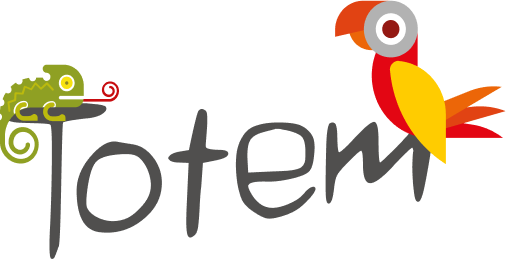Found your “Zen”? Now how about finding your “Ikigai”?
The land of the rising sun has given us many things... There’s martial arts, Anime, CD, DVD, Blu-ray - even DSLR cameras. As a country, Japan and its people have so much to offer, starting with their unique perspectives on life.
Perhaps you’ve heard of Wabi-Sabi, the Buddhist concept of finding beauty in what is impermanent and imperfect - a.k.a. accepting our flaws with grace.
Or how about Kintsugi? Meaning golden journey, it refers to the art of repairing damaged objects with gold lacquer in order to create an object of beauty by celebrating its flaws, building on the concept of Wabi-Sabi.
Then there’s Kaizen: change for the better. Businesses around the world take inspiration from Kaizen as the value of continual improvement through small changes. The concept is just as easily applied when it comes to personal development.
And don’t forget Kanso, all about eliminating clutter and expressing things as simply as possible...
Today we’re going to talk about Ikigai, and why you should introduce the Japanese concept of Ikigai to your workplace.
Japan has long been known for exemplary dietary and health practices contributing to its citizens enjoying long and healthy lives, with the world’s largest population of people who live to age 100 or higher. Emerging studies suggest that the Japanese concept of Ikigai may actually be the reason behind these impressive statistics on work, longevity and living a happy life.
The Japanese concept of Ikigai, pronounced ee-key-guy, has long been a source of curiosity for self development gurus everywhere, with many a book written on the topic, full of simple secrets for a meaningful life.
The Japanese word Ikigai is thought to date back to the Heian period (794 -1185).
In Japanese, “Iki”, means “alive” or “life,” coming from “ikiru” to live.
The Japanese word “Gai” can mean “benefit” or “worth”, coming from the Japanese word “kai” signifying a shell, an object considered to be of great value.
A reason for being, the meaning of life, your life’s purpose, a “raison d'être”, whatever you want to call it, this reason, that’s your Ikigai.
It’s the “why” of your work, why we are here, why what we’re doing matters. Human beings need to feel purposeful, to feel like they are doing something meaningful. People function best when they have a clear sense of direction at work, a plan and a life purpose.
Ask yourself, is your heart in it? That’s Ikigai.
Feeling at a crossroads? Existential crisis on the horizon?
Think of the Japanese concept of Ikigai like your very own compass - for finding supreme focus at work and your life's purpose.
North, East, South, West - Passion, Vocation, Profession, Mission.
- What do I love? (passion)
- What am I good at? (vocation)
- What can I be paid for? (profession)
- What does the world need? (mission)
Your very own map to satisfaction, happiness and meaning to life.
It’s no wonder that people who finally get their “dream job” or start their own business see their sense of purpose skyrocket. People who experience these feelings of fulfillment talk about their business or project at work being their “baby”, “watching it grow”, “hitting milestones”, and it’s no surprise, they’ve found their Ikigai. You can find Ikigai outside of work too. Travelling, raising a family, writing a book, a simple hobby... It’s about striving to find purpose in life and at work.
Take some time to help your team find their Ikigai and watch organizational purpose and engagement grow.
Strategies for Bringing Ikigai to your Workplace
Start by creating a mission or vision statement that communicates what the business is and what it stands for. A mission statement is more than just a tagline for marketing purposes, it’s an opportunity to communicate purpose and build a community at work.
Next, start at the top. For team members to find their Ikigai, leaders must first seek out their own sense of purpose.
Communicating purpose is key. What is the purpose of this project? What is the purpose of that role? Continually reaffirm the company’s organizational purpose.
Now you have outlined and communicated your organizational purpose, you can make decisions based around it.
Ask team members what matters to them at work and aim to include this in organizational purpose.
Try taking inspiration from a book on applying Ikigai to your daily life or even asking a Japanese person! If you ever venture to a remote Japanese village or Japanese island, or meet an older Japanese person, a discussion about the balance between work, Ikigai and everyday life is the perfect conversation starter for making some good friends over some green tea. You could also try checking out a Ted Talk.
The Five Pillars
The second part of the Japanese Ikigai concept is known as the five pillars.
Now here’s the thing, it is much easier to feel Ikigai and find happiness once we have created social connections.
These five pillars will make it much easier for you to find your Ikigai and life satisfaction.
- Start small
- Accept yourself
- Connect with the world around you
- Seek out small joys
- Be in the here and now
Take a look at Totem's Ikigai diagram:

Our Ikigai diagram is the easiest way to understand this Japanese secret so you can share this element of Japanese culture with your team. It takes the form of a Venn diagram, so you can see where things start to overlap.
Feel free to share the Ikigai diagram with those around you who might also benefit from some Japanese philosophy and the secret to longevity and finding joy in every day life.






